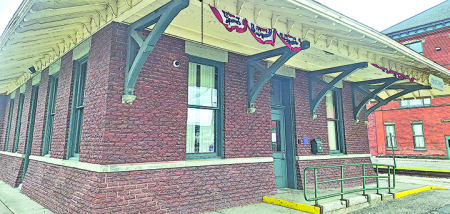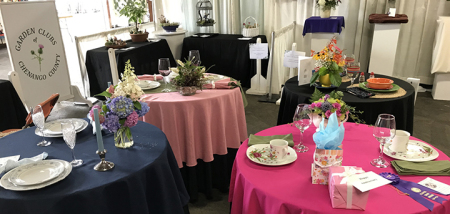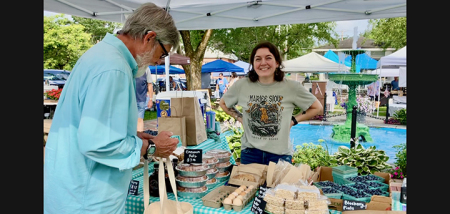Keep Calm And Kerri On: ‘Victorian-esque’
Published:
March 28th, 2022
By:
Sun Columnist Kerri Green

Dear Friends,
Of all the era’s our world has seen, the Victorian one is by far the weirdest. I realize that’s a strong statement to make, but I think after reading this week, you will be inclined to agree.
The Victorian era (1837-1901), is named for Britain’s Queen Victoria and is known for its glamor, music, parties, and love of all things beautiful.
That’s the nice part, and yes, I give them props for some of our most influential artists such as John Ruskin, Frederic Lord Leighton, Beethoven, Chopin and Debussy to name a few.
However, despite the many wonderful things that are noted for this time period, there were some odd behaviors, routines and practices that make you go “hmmm”?
To be fair, I am sure that in a couple hundred years people will look back at the early 2000’s and wonder what we were thinking. Reality TV, baggy jeans, flip phones, colored hair and boy bands to name a few.
One of the odder practices was the fear, and subsequent option, of being buried alive. This happened more often than you think and because of this, coffins were equipped with a bell inside that was tied to the finger or arm of the deceased, which was attached by a rope to a bell above ground. Unfortunately, there was not a lot of information on what happens when a body decomposes, which caused a lot of cemetery caretakers and visitors to get the shock of their life when a bell would suddenly ring. More times than not the person had not returned from the dead, but it did happen on occasion.
There are many documented cases of this occurring and one of the most famous stories of this is that of Anne Hill Carter Lee from Virginia (US). Anne went through a period of poor health and after the doctor was unable to detect a heartbeat, she was pronounced dead. Since her family came from considerable means (meaning she was placed in a tomb rather than being buried), she was placed in the family mausoleum until a visitor heard her muffled cries. To everyone’s shock, Anne was exhumed in perfect physical health. I am sure she was not in great mental health after being tucked away in the family tomb alive, but she was breathing.
Another custom during this time was something called “four penny coffins”. The primary purpose was for sleeping, created by the Salvation Army, to offer low-cost accommodations to those who lived on the street and needed a warm place to sleep. Unfortunately, during this time disease and death were rampant, so if a person were to pass away in the night these cheaply made beds were an easy transition to the death house.
For those who were passionate about their teeth, a common practice was brushing your teeth with a mixture of charcoal and honey. While it was believed that charcoal had the ability to whiten your teeth, the honey was basically like brushing your teeth with candy. Imagine that today? Here honey – a brick of charcoal to scrub your pearly whites and here’s a gummy worm to floss with. No wonder why people back in the day had horrible teeth!
How often do you just pop in to see a friend without letting them know you are coming? Most of us do it with our closest friends and family, but in the 1800’s you were expected to host visitors during a specific period of time. Each day, the lady of the house was expected to prepare their home, themselves, and a snack because between the hours of 3:00 p.m. to 6:00 p.m. greet and host visitors. If you visited someone outside of these hours, you were considered uncivilized and may find yourself on the receiving end of a penny dreadful, in addition to being subject of the gossip mill.
What about the days you just didn’t feel like hosting? Imagine 3 p.m., your doorbell rings and you open it wearing your nightdress, hair down (eek! so scandalous) and instead of a nicely laid out tea, and sandwiches, you put out last night’s leftover dessert, and offer a teacup with some bourbon? Honestly that sounds perfect to me, but I am sure the society ladies would have something to say about that.
In the Victorian era, women painstakingly cared for their skin. The goal was flawless, blemish-free skin. Even a hint of color meant you were outside without your parasol. Women were always looking for ways to keep their skin looking young and healthy and I found a couple ways that may surprise you. You’ve probably used a face mask before or have heard of them. Have you ever considered using raw beef or veal? No? How about bathing in blood or a few sips of mercury or arsenic? Not something you can readily find on the shelves at Ulta Beauty.
Did you ever notice how often people wore black during this time? Most pictures you find from this period everyone is wearing black. No, they weren’t in constant mourning; there is actually a practical explanation: clothes weren’t washed every time they were worn; wash was done about once a month (or longer) and black hides dirt and stains very well. I read an article about how much dirt was in the air in London back in the day, and if you were to wear a white shirt, it would turn grey very quickly. Black was just easier to maintain.
Finally, it was believed that eating in the dark helped you with digestion. Maybe because you couldn’t see what you were eating so you ate less?
Thankfully with advancements in medicine, technology and hygiene most of these practices are no longer followed. However, if you find yourself in a cemetery and you hear a bell ringing, you may want to check it out … or run!
Be well,
~ Kerri
The views and opinions expressed in this publication do not necessarily reflect the views and positions of any entity that this author represents.
Comments










